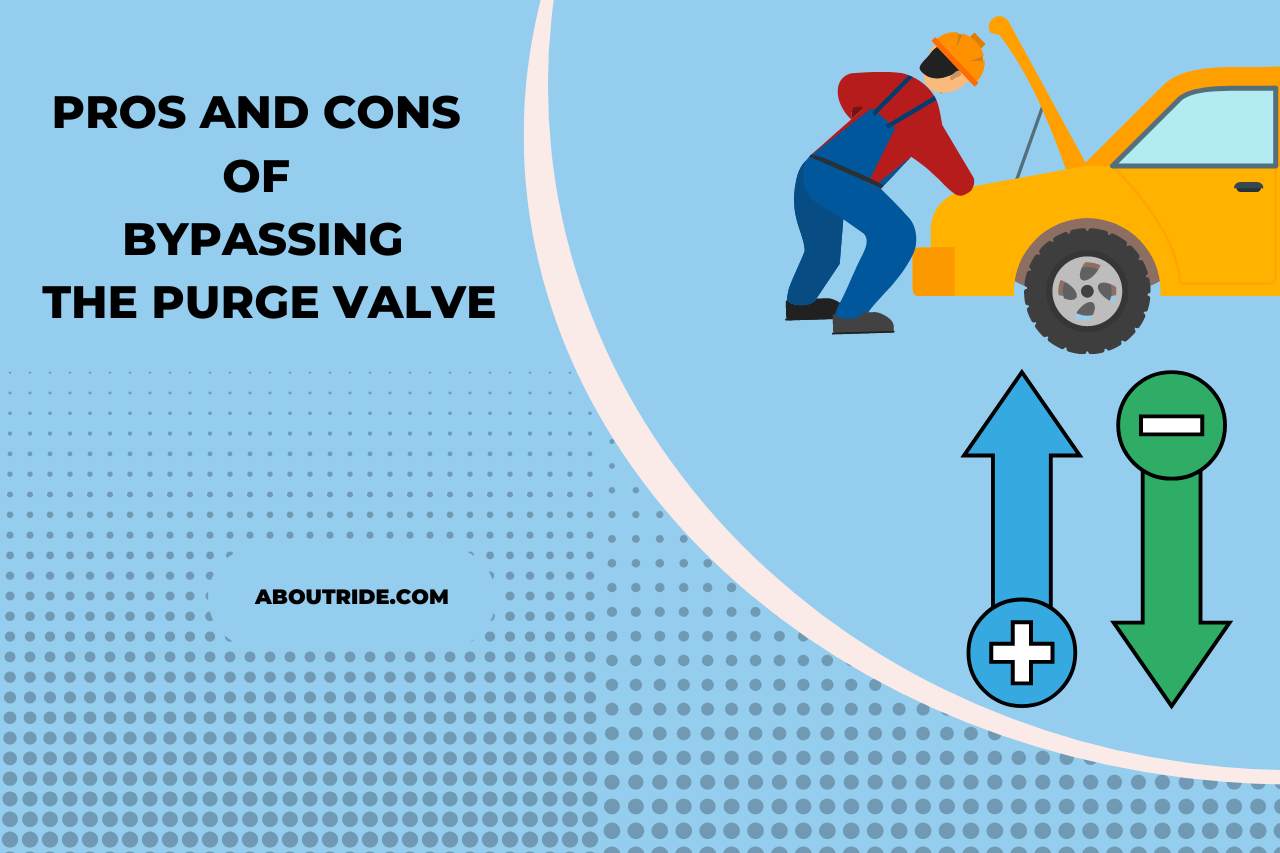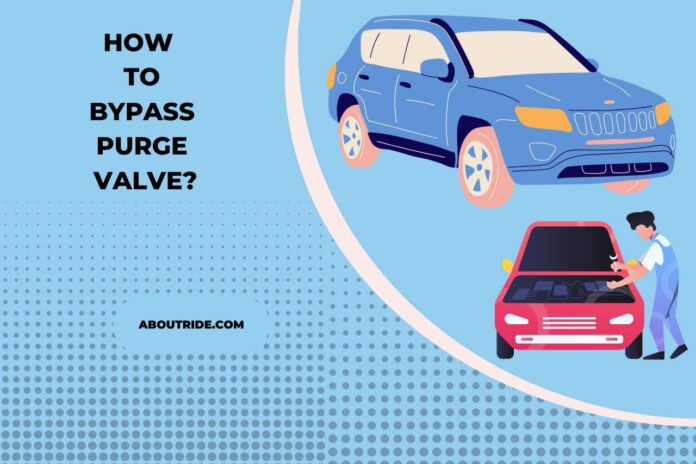We want to ensure you have the information and understanding necessary to complete this procedure safely and effectively. Thus, this article offers thorough instructions and insights on bypassing the purge valve. There may be instances where bypassing the purge valve for a particular cause is essential or preferable. How to bypass the purge valve? We’ll take you step-by-step through bypassing the purge valve using helpful articles, detailed instructions, and professional advice. We stress the significance of responsible vehicle ownership and adherence to regional emissions laws while offering substitute solutions for anyone encountering problems with the purge valve.
Would you Want to Bypass the Purge Valve?
It is possible to bypass an emission control system purge valve. However, doing so is often not advised. The purge valve is intended to minimize emissions and maximize fuel efficiency and is essential to correctly operating the emission control system.
It’s essential to consider that turning off the purge valve may result in increased emissions, drivability concerns, and a failure to adhere to regional emissions standards. The check engine light and diagnostic trouble codes (DTCs) can be activated by bypassing the purge valve.
What Causes a Purge Valve to Go Wrong?
The purge valve’s internal parts may deteriorate over time, resulting in poor performance or failure. High mileage, difficult driving conditions, or inadequate maintenance procedures can all hasten this wear.
- Debris, dirt, or carbon buildup can clog or pollute the purge valve. This could limit the valve’s motion or keep it from sealing correctly, leading to an issue.
- The purge valve could occasionally have issues with the wiring or electricity. The valve may not function at all or with unsatisfactory performance due to faulty wiring connections, broken electrical components, or problems with the control circuit.
- Electronic solenoids or control modules are frequently used to operate the purge valve. The valve operation may be affected if certain parts malfunction or fail.
- The purge valve may prematurely fail due to improper installation or the use of a subpar or inappropriate replacement part.
It’s crucial to remember that a broken purge valve may cause the check engine light to come on and may impact the vehicle’s emissions control system. It is advised to get your purge valve examined and fixed by a qualified technician or approved service facility if there is a problem.
Can you Bypass the Purge Valve?
Getting around an emission control system purge valve is generally not advised. Bypassing the purge valve can negatively impact the vehicle’s performance, emissions, and compliance with environmental requirements. The purge valve is essential to the system’s correct operation.
- By regulating the flow of fuel vapor from the charcoal canister to the engine, the purge valve aids in reducing emissions and preserving the ideal air-to-fuel ratio.
- The purge valve is constructed to collect and send fuel vapors back to the engine for combustion to reduce harmful emissions. Passing the purge valve increases your emissions, which might cause your car to fail emissions tests or inspections and contribute to air pollution.
- The purge valve assists in managing fuel vapors to maximize fuel efficiency. Bypassing the purge valve can interfere with this procedure and negatively influence fuel economy, resulting in less mileage and higher fuel costs.
- Bypassing the purge valve may cause the check engine light (also known as a malfunction indicator lamp) to come on and cause the car’s computer system to record diagnostic trouble codes (DTCs). This can make identifying future problems difficult and impede troubleshooting attempts.
- Modifying the vehicle’s emissions control system, including bypassing the purge valve, may be against local emission rules and regulations. Legal repercussions, fines, or challenges with car inspections or registrations may ensue.
What Happens If you Bypass the Purge Valve?
The purge valve is a crucial part of the emission control system to collect and send fuel vapors from the charcoal canister back to the engine for combustion.
Bypassing the purge valve can increase the amount of dangerous pollutants released into the atmosphere, which can cause your car to fail emissions tests or inspections.
The check engine light (malfunction indicator bulb) may come on if the purge valve is bypassed because the vehicle’s onboard diagnostic system may detect the altered emissions flow.
This may cause the car’s computer system to accumulate diagnostic trouble codes (DTCs), making it difficult to find other possible problems and hurting your ability to pass emissions testing.
The purge valve helps to control gasoline vapors and maximize fuel economy. Bypassing the purge valve can interfere with this process, resulting in less mileage, higher fuel consumption, and a loss in fuel efficiency.
Driving difficulties, such as rough idling, stalling, or hesitation during acceleration, may come from bypassing the purge valve. This is because maintaining the correct air-to-fuel ratio and overall engine performance depends on the purge valve’s ability to function.

Pros and Cons of Bypassing the Purge Valve
Examining the potential benefits and drawbacks before bypassing the purge valve in an automobile’s pollution control system is crucial. It’s important to remember that bypassing the purge valve is typically not advised due to the potential consequences.
Pros
- By bypassing the purge valve, potential issues may be momentarily removed, making debugging easier. But rather than avoiding the root of the purge valve problem, it’s crucial to deal with it.
Cons
- The purge valve is essential in lowering hazardous emissions by rerouting fuel vapors back to the engine for combustion. Bypassing the purge valve, you risk increasing emissions, which might cause your car to fail emissions tests or inspections and contribute to air pollution.
- The check engine light (malfunction indicator bulb) may come on due to bypassing the purge valve, and diagnostic trouble codes (DTCs) may be recorded in the car’s computer system. This can make it more difficult to discover other potential problems and impede troubleshooting efforts. The purge valve helps maintain the ideal air-to-fuel ratio, control fuel vapors, and maximize fuel economy.
- The purge valve can be bypassed to interfere with this process, which reduces mileage and decreases fuel efficiency.
- Driving difficulties, including rough idling, stalling, or hesitation during acceleration, can result from bypassing the purge valve. The optimum air-to-fuel ratio must be maintained to preserve engine performance.
- Modifying the vehicle’s emissions control system, including bypassing the purge valve, may be against local emission rules and regulations. Legal repercussions, fines, or difficulty with car inspections, registrations, or compliance checks may occur from it.
How to Bypass the Purge Valve?
A vehicle’s emissions control system can be altered by bypassing the purge valve. This may have legal repercussions, such as breaking local emission rules and regulations.
Legal repercussions, fines, or challenges with car inspections, registrations, or compliance checks may occur from this.
If you are having issues, it is advised to have the purge valve’s issues identified and fixed by a licensed mechanic or approved service facility.
To guarantee that the vehicle functions properly and complies with emission requirements, they can pinpoint the precise cause of the issue and carry out the required repairs or replacements using suitable materials and techniques.
Watch this one,
Video Credits – HVAC Mechanic
You May Also Like
